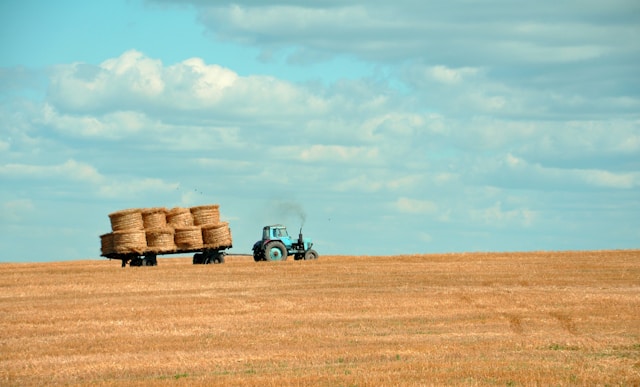Using Practice.farm to improve your high register
Learn targeted strategies for developing your high register using Practice.farm's range settings and intelligent exercise selection.
Using Practice.farm to improve your high register
Developing a reliable high register is a common goal for brass and woodwind players. Practice.farm has tools built in that will let you work on your high register in a targeted, systematic way. Here are several strategies to help you build range efficiently and safely.
Setting your range for targeted practice
The key to effective high register development is progressive, controlled practice. Practice.farm's range settings allow you to customize exercises to match your current abilities while pushing your boundaries systematically.
Method 1: Top-down approach
This method ensures every exercise reaches your target high note:
- Click on Settings, then open the Range panel
- Set the high limit to the top of the range you're targeting
- At the bottom of the window, select "The Highest One"
With this setting, every exercise displayed will have its highest note match your selected limit. For example, if you set your high limit to F5, every exercise will peak at exactly that F, with the rest of the exercise falling in the octaves below.
This approach offers several benefits:
- Consistent exposure to your target note in different musical contexts
- Gradual expansion by moving up one semitone at a time as you improve
- Reduced risk of overreaching and developing bad habits
Method 2: Range window approach
For general high register work without focusing on a specific top note:
- Set both bottom and high limits in your range settings
- Select "Random Selection" at the bottom of the window
This ensures all exercises fall within your specified range window, with each exercise appearing in a random key that fits your parameters. This method is ideal for:
- Building consistency across your upper register
- Developing flexibility between different keys
- Avoiding the mental pressure of always reaching for the same top note
Choosing the right exercises
Not all exercises are created equal for high register development. Here are some recommendations:
- Lyrical studies from Bordogni or Marchesi
- Melodic etudes that incorporate high notes musically, such as Arban's "The Art of Phrasing" chapter
For developing accuracy
- Arban's interval studies set to your high range
- Arpeggio exercises that approach high notes from below
- Scale patterns that pass through your break smoothly
Practice strategies for success
Start smart
Begin each session with exercises comfortably within your range before attempting anything at your limit. Use the "Random Selection" setting initially to warm up across your comfortable range.
Use the metronome wisely
Practice.farm's intelligent metronome can help you:
- Start slowly to ensure accuracy and good tone
- Gradually increase tempo only after achieving consistency
- Use subdivisions to maintain rhythmic precision at all speeds
Rest and recovery
High register practice is physically demanding:
- Take regular breaks during your practice session
- Alternate between high and low register exercises
- Listen to your body and stop if you feel strain or fatigue
Common pitfalls to avoid
- Don't rush: Range building takes time and patience
- Don't force: Excessive pressure leads to tension and limits progress
- Stay consistent: Regular, moderate practice beats sporadic intense sessions
Conclusion
High register development is a gradual process that benefits from systematic, intelligent practice. Practice.farm's range settings and exercise adaptation features provide the perfect environment for safe, effective range building.
Enhance Your High Register Practice:
- Master Arpeggios with Circle of Fifths - Build technique across all keys for comprehensive range development
- What Makes Practice.farm's Metronome Unbeatable - Use tempo control for gradual range building
- Low Register Practice Guide - Balance your range development with foundation work
Advanced Practice Science:
- Smart Practice Beats Hard Practice - Why varied practice accelerates range development
- The Hidden Cost of Repetitive Practice - Prevent injury while building range safely
Start Building Your High Register: Configure Practice.farm for targeted range development and access exercises perfectly adapted to your current abilities and goals.
By using Practice.farm's range settings strategically and following these guidelines, you can develop your high register systematically and safely. Remember that consistency and patience are key – small daily improvements lead to significant long-term gains.
About the Author

Nick Mahon
Founder & Creator of Practice.farm
Nick Mahon has been a member of the Orchestre Symphonique de Québec since September 2013 and was appointed principal trombone in 2016. He performed as soloist with the OSQ in 2017, playing the Albrechtsberger Concerto for alto trombone. In 2019, he joined the faculty of the Conservatoire de musique du Québec as professor of trombone.
A native of London, Ontario, Nick studied music performance at the University of Toronto. His festival experience includes the Tanglewood Music Centre and Music Academy of the West. He has performed with the Hong Kong Philharmonic, Toronto Symphony Orchestra, Canadian Opera Company, and numerous other Canadian orchestras, and was a multiple prize winner at the 2011 Orchestre symphonique de Montréal competition.
Drawing on nearly 20 years of software development experience, Nick created Practice.farm in 2025. What started as a personal practice tool evolved into a resource he shared with his students at the Conservatoire. Practice.farm has since grown into a comprehensive practice application serving musicians around the world.
To learn more about Nick's development work, visit his portfolio website.



